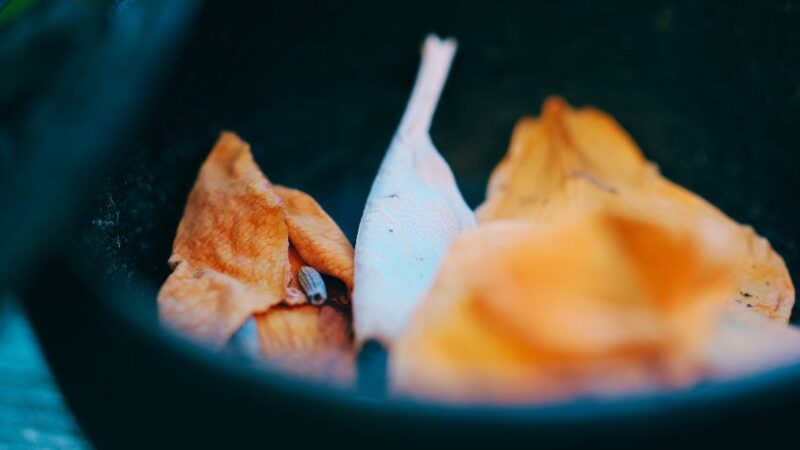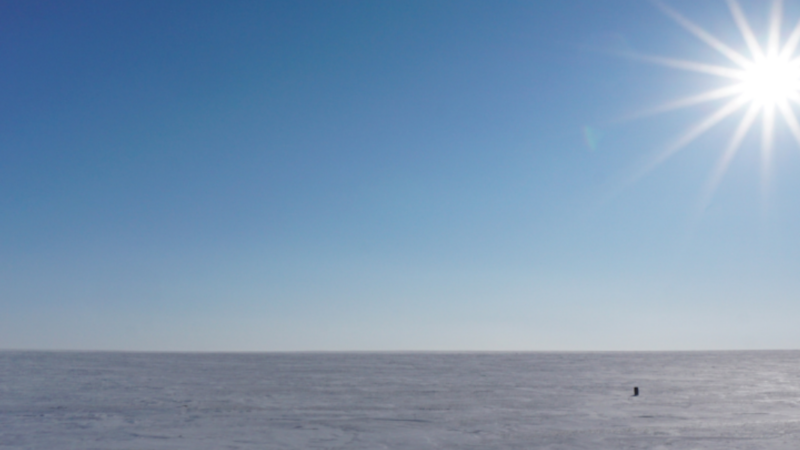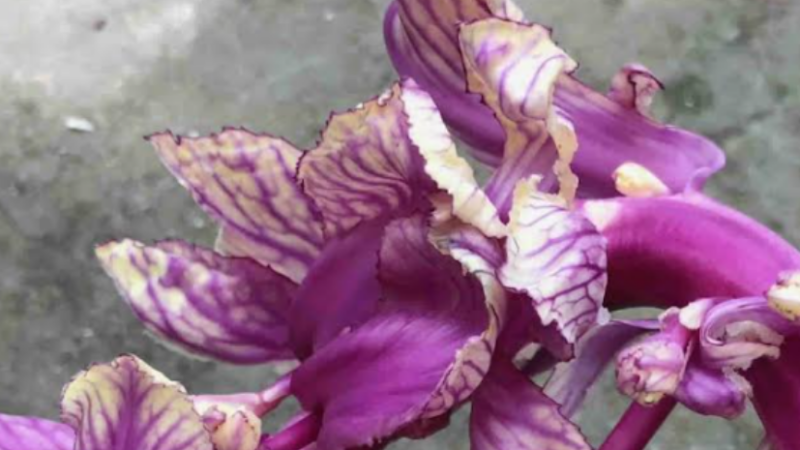-
Honey Tasting Meditation: Build Your Relationship with Sweetness
There is a saying that goes “hurt people hurt people.” I believe this to be true. We have been conditioned, in environments of scarcity and violence, to react more...
Written by:
Amy Burtaine & Michelle Cassandra Johnson
Most Recent
Erotic Authenticity: Replacing Shame with Celebration
Sometime last year, I was having a conversation with a close relative of mine. I had sent them a recent news story I was quoted in and had been met with… silence. Eventually, I nudged a little bit and they responded, saying “I’m sorry, I just can’t be proud of someone who talks about sex and sex toys for a living. It’s embarrassing.” As we unpacked this statement, it became clear that they were unable to see the good—any good—in my work. As a therapist, as a writer, as an educator… my work was shameful in their eyes. In that moment, I understood my clients in a way I never had before.
With Sprinkles on Top was already finished by the time this occurred, but if it hadn’t? This conversation would have inspired me to write it. It can be incredibly painful to have someone you love tell you that “What you do is wrong. Who you are is not OK.” Many kinky people are afraid that if they share their innermost selves with the ones they love most, they too will be rejected, written off as broken or creepy or wrong. I wrote Sprinkles because I believe deeply that every single human being deserves to feel loved and worthy and whole, to know that their innermost desires are not just valid but beautiful, and to find others who can celebrate this beauty and their relationships together with them.
Sprinkles is also written for the partners of these kinky people, many of whom tell me that, if their spouse had just been willing to share their desires, they would have happily explored with them. For the spouses who don’t understand the fantasies or intimate practices they’re learning about and who need a guide to help them navigate these new relationship waters. For the men and women who call my office afraid—afraid that there’s something wrong with their partner or something inadequate in themselves.
They want me to “fix” them. I want to celebrate them.
With Sprinkles on Top is not a “how to” book. It’s a “what now?” book. My goal is to celebrate the things that make each person and each relationship unique and delightful—and to help them discover new unique qualities in themselves and new ways to delight one another. I want to celebrate vanilla relationship values while also normalizing and affirming kinky identities. I want to help my readers find new and exciting ways to enhance their own core sexual and relational “flavor” through interactive activities they do by themselves and with their partner.
Differences in desire represent an exciting opportunity to strengthen and reinforce the bonds of intimacy and trust we have created within our relationships, while also expanding the erotic playground we enjoy together. We don’t have to change who we are. We don’t have to be ashamed of what we want or embarrassed to talk about it. Sexuality, desire, and intimacy are, to me, sacred gifts. I’m honored to be able to help my readers, my clients, and others to build happier, healthier relationships with their bodies, their partners, and themselves. I hope you enjoy the process of finding your sprinkles and using them to communicate, explore, and connect with the one(s) you love.
Kol Tuv,
Stefani Goerlich
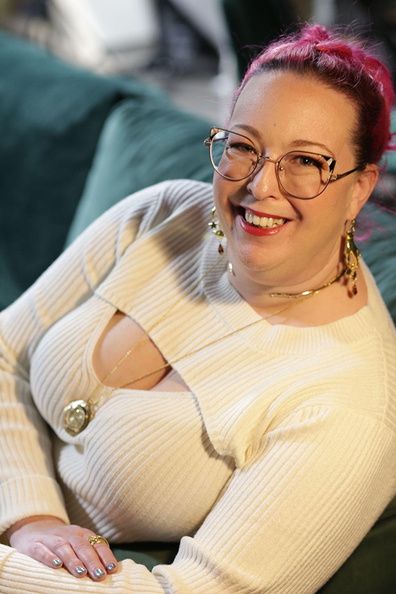
Stefani Goerlich, PhD, LMSW-Clinical, LISW, LCSW, CST, is a certified sex therapist and master social worker who specializes in working with gender, sexuality, and relationships. She is a sought-after clinical supervisor, media consultant, and conference presenter who has appeared in media ranging from CNN and the Washington Post to Cosmopolitan and Teen Vogue. She is the award-winning author of the professional books The Leather Couch and Kink-Affirming Practice.
Author photo © Kim Williams
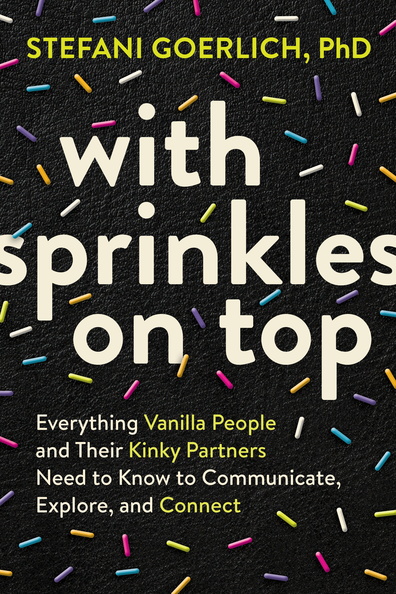
With Sprinkles on Top
Learn to walk the profound journey of healing individu...
We are facing what is perhaps the greatest civilizational crisis of our time, the global ecological emergency. If the underlying challenge to climate change (and other systemic social problems) can be traced to human disrelation—a state of being out of accordance with nature, ourselves, and other humans—then I propose it to be a fundamentally spiritual problem, as much as an environmental, scientific, technological, cultural, psychological, economic, or historical one. At the root of this spiritual problem is collective trauma.
My work as a teacher over the past 20 years has focused on the integration of science and mysticism. Over time, as my training programs and retreats developed what emerged was a clear need to address collective trauma.
Attuned: Practicing Interdependence to Heal Our Trauma—and Our World is a guide for anyone committed to the healing of our struggling world. With practical instruction on reducing stress and building resilience, along with practices such as transparent communication, my book is intended to support each of us and our communities in embracing our interdependence. As you learn to attune to others, you begin to refine your capacity to relate — and to walk the profound journey of healing individual, ancestral, and collective trauma.
The complexity of challenges we face in the 21st century demands a new level of human collaboration. To respond with creativity and innovation to these challenges, we must think holistically. In this way, we awaken our most intrinsic biological gifts: the powers of our soul’s intelligence – that which inside us knows how to heal and restore.
Perhaps, rather than finding ourselves alive in a time of exponential, unstoppable decline, we will discover the power to access the evolutionary gifts that appear dormant in us. To accomplish this, I believe we must do it together—not separately, but in relation, as communities dedicated to healing our collectives.
It may take only a small number of us to establish a new level of collective coherence—to share our light, heal our wounds, and realize the unawakened potential of our world. Will you join me on this journey of attunement?
With gratitude,
Thomas Hübl
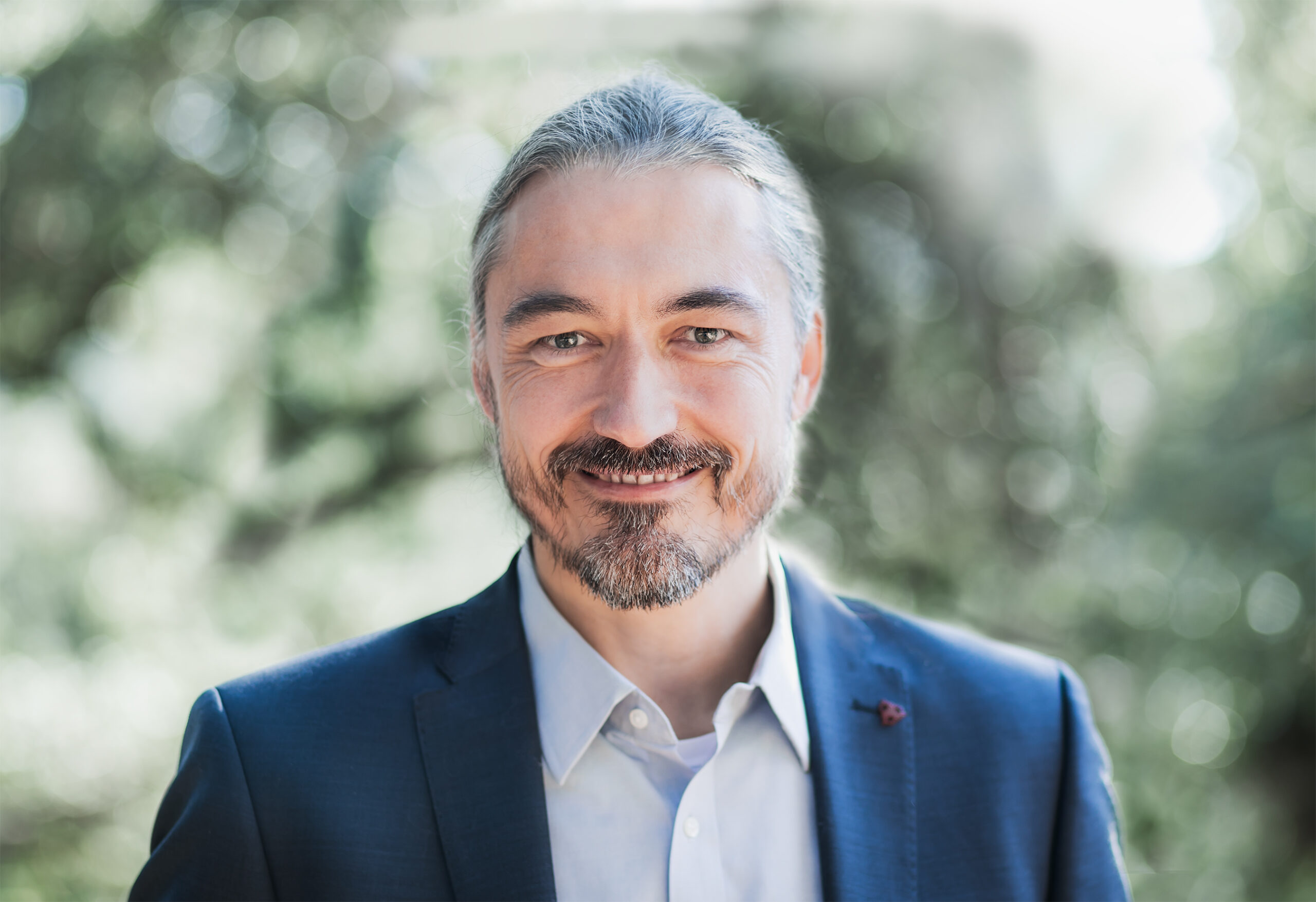
Thomas Hübl, PhD, is a renowned teacher, author, and international facilitator who works within the complexity of systems and cultural change by integrating modern science with the insights of humanity’s wisdom traditions. Since the early 2000s, he has led large-scale events on the healing of collective trauma, with a special focus on the shared history of Israelis and Germans, and facilitated healing and dialogue around racism, oppression, colonialism, and genocide, among other topics. He is the author of Healing Collective Trauma and Attuned (both with Julie Jordan Avritt). He has served as an advisor and guest faculty for universities and organizations, and he is currently a visiting scholar at Harvard University’s Wyss Institute. For more, visit www.attunedbook.com.
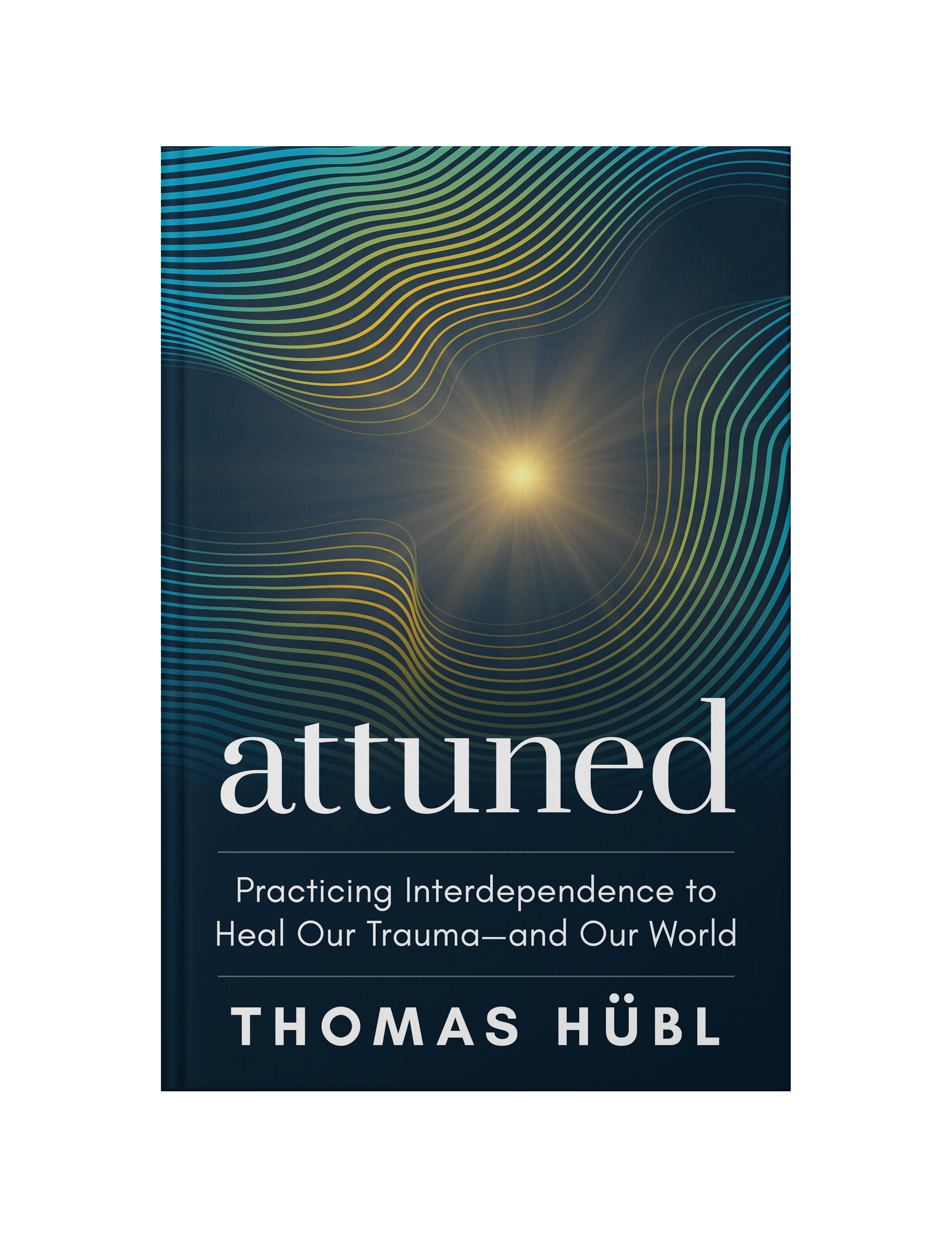
Learn More
Amazon | Barnes & Noble | Bookshop | Sounds True
Customer Favorites
How to Meditate – with Pema Chödrön
When it comes to meditation, Pema Chödrön is widely regarded as one of the world’s foremost teachers. Yet she’s never offered an introductory course on audio—until now.
On How to Meditate with Pema Chödrön, the American-born Tibetan Buddhist nun and bestselling author presents her first complete spoken-word course for those new to meditation.
Through traditional insights and her personal guidance, offered in 12 sitting sessions, Pema Chödrön will help you honestly meet and compassionately relate with your mind as you explore:
- The basics of mindfulness awareness practice, from proper posture to learning to settle to breathing and relaxation
- Gentleness, patience, and humor—three ingredients for a well-balanced practice
- Shamatha (or calm abiding), the art of stabilizing the mind to remain present with whatever arises
- Thoughts and emotions as “sheer delight”—instead of obstacles—in meditation
“From my own experience and from listening to many people over the years, I’ve tried to offer here what I feel are the essential points of meditation,” explains Pema Chödrön. Now this beloved voice shares with you her accessible approach—simple and down-to-earth while informed by the highest traditions of Tibetan Buddhism—on How to Meditate with Pema Chödrön.
How to Bloom in the Dark: Self-Compassion, Compost, an...
Compassion is the magic ingredient that turns our personal “compost” into personal evolution.
Some time ago, I found a strange bloom in the kitchen. It was elegantly twisted, like a dragon at a Chinese New Year celebration. It was frilled, purple, and pungent. This exquisite thing grew out of a chunk of purple cabbage that I’d put under the sink to go out for compost. Instead of fading quietly however, it burst into new life in the dark grotto of my cabinetry. It blossomed into something unexpected, unusual, and fiercely beautiful.
Reflecting on the discovery of this “flower” in the shadows, I’m reminded of, and heartened by, the fertility of dark times. Many people are feeling a collective spiritual darkness now, exhausted and frustrated, maybe also angry and scared. Having compassion for ourselves and others is especially important in times of literal and metaphorical darkness. How can we do this if we already feel overloaded?
Nature is our ultimate model and guide—in the light, in the dark, and in the most surprising and gorgeous ways. Cue the weird, glorious cabbage flower which came to life in the dark. What was being shown there?
There is the clear compost metaphor. Compost is the stuff we reject, the moldy, wilted, too hard, too soft, nasty bits that don’t make it to the table. It’s also the leftovers from delicious things we appreciate and enjoy, silky mango skins, green tea leaves, dark coffee grounds.
It all transforms into a rich sloop that eventually nourishes future plants. Our personal work includes processing our own “dark” sides, the parts we’d like to hide or discard. Self-compassion (and compassion for others) holds both the rejected and respected parts of who we are. Like composting, it isn’t always pretty, but it’s potent. Research shows self-compassion helps us stay present and kindhearted without sinking into absorptive empathy, which can lead to overload and burnout. This meditation is part of the toolkit in the audio course Shining Bright Without Burning Out.
The cycles of the natural world, into which we are interwoven, take time. It’s hard to be patient, to let everything, both scorned and enjoyed, stew in our symbolic personal compost piles. The speed with which that brew changes from nasty to nourishing varies widely with the internal and external conditions. Sometimes all those different elements take a long time to dissolve and break down. Sometimes it turns around faster than we think possible, like time-lapse photography of a log rotting on the forest floor with new green shoots springing to life overnight. Compassion is the magic ingredient that turns our personal “compost” into personal evolution.
The dark supports transformation. Times of literal darkness are needed for regeneration. Roots, seeds, and bulbs prepare. People and animals sleep. Times of symbolic darkness are also helpful. In darkness, transformative processes happen without spectators, often below the level of our conscious awareness. These are periods of catharsis, healing after trauma, cocooning in preparation for the next version of ourselves and our world.
We sometimes feel hopeless and helpless in the dark. Our society avoids sinking into it. Instead, we gravitate towards purveyors of easy “love and light!” spirituality, shying away from the deep, gooey work that happens to the larval versions of ourselves (and those around us) when we’re in the darkness of the cocoon. Self-compassion is most needed when we’re a mess.
The dark is a vital part of the wheel of our days, our years, our lifetimes. We need it to survive and be healthy in the long term. So, let’s embrace it, explore it, and be gentle with ourselves as we confront our fear of it. From this darkness we are nourished to bloom into the light.
@ 2021 Mara Bishop MA
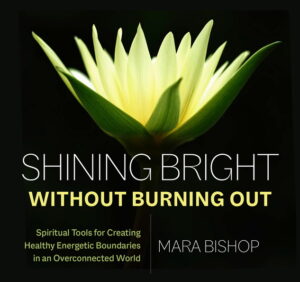 Order Shining Bright Without Burning Out now!
Order Shining Bright Without Burning Out now!
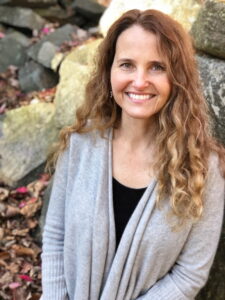
Mara Bishop has
over 25 years of experience helping people find spiritual health and
well-being. Her Personal Evolution Counseling™ method blends shamanism,
psychology, intuition, energy healing, and nature-based practices. She
lives in Durham, NC with a beloved family of people, animals, and
plants.
More information about Mara is at www.WholeSpirit.com
The Basics of Natural Awareness 101: Dropping Objects

There are three deliberate mental shifts you can make during classical mindfulness meditation that can help point you toward natural awareness: relaxing effort, broadening attention, and dropping objects.
If you have not read the previous two steps, you can find Relaxing Effort and Broadening Attention on our blog.
Dropping Objects
When you’re practicing classical mindfulness meditation, probably the most important shift you can make to invite in natural awareness is to move your attention from objects to objectless-ness. Now what on earth does that mean?
Objects of meditation are, simply put, the things we focus on, such as the breath, body sensations, emotions, thoughts. An object can also be something outside us, like another person, sights, or sounds. Any kind of thing can be an object of meditation. Taking something as the object of our awareness is basic to classical mindfulness meditation, as you saw in the previous chapters. Focusing on objects and attending to them is generally how we live our life as well.
Objectless awareness, typically developed in meditation and uncommon in daily life, is when we focus less on the objects of awareness and instead focus on the awareness itself. There will be objects arising in our meditation—thoughts, emotions, sensations, for example—but since they are not the focus, they are less distinct, and we become aware of awareness itself. So instead of our anchor being our breath, for example, our anchor is awareness itself.
People tend to experience objectless awareness in three different ways: that in which everything is contained, that which knows, and that which just is.
That in which everything is contained. Broadening attention from a narrow focus to a more panoramic perception is closely aligned with the experience of objectless awareness as that in which everything is contained. You will notice me using analogies like “Our mind is like the sky, and everything in it is like clouds floating by.” This helps me convey the idea that awareness contains everything. So when we turn our attention to the sky-like nature of our mind, noticing the boundless space around things, we are noticing the field of awareness in which everything is contained. Some people experience objectless awareness in this way.
Think about looking out a window at a busy street. When we look out the window, we take in the full view in a relaxed way. Rather than specifically focusing on individual vehicles, we somehow are aware of everything that is happening simultaneously, and our vision seems to contain everything.
That which knows. The second idea that objectless awareness focuses on is a little tricky. Most of us are used to focusing on objects when we meditate, but what happens when we make the shift to noticing that which is being aware—to seeking the knower? Oftentimes this shift can feel quite joyful and freeing. Many of the practices in the book move us toward awareness of awareness, as you will see. If you start searching for the knower, what do you find?
The idea is that we can notice things, and we also notice the thing that notices things. We can take our attention from an outward focus on objects and turn it inward, as if we are reversing our attention—trying to move from that which we are aware of, to that which is aware of what we are aware of.
This is excerpted from The Little Book of Being: Practices and Guidance for Uncovering Your Natural Awareness by Diana Winston.


Diana Winston is the director of Mindfulness Education at UCLA Semel Institute’s Mindful Awareness Research Center (MARC) and the coauthor, with Dr. Susan
Smalley, of Fully Present: The Science, Art, and Practice of Mindfulness. She is a well‑known teacher and
speaker who brings mindful awareness practices to the general public to promote health and well‑being. Called by the LA Times “one of the nation’s best‑known teachers of mindfulness,” she has taught mindfulness since 1993 in a variety of settings, including hospitals, universities, corporations, nonprofits, schools in the US and Asia, and online. She developed the evidence‑based Mindful Awareness Practices (MAPS) curriculum and the Training in Mindfulness Facilitation, which trains mindfulness teachers worldwide.
Her work has been mentioned or she has been quoted in the New York Times; O, The Oprah Magazine; Newsweek; the Los Angeles Times; Allure; Women’s Health; and in a variety of magazines, books, and journals. She is also the author of Wide Awake: A Buddhist Guide for Teens, the audio program Mindful Meditations, and has published numerous articles on mindfulness. Diana is a member of the Teacher’s Council at Spirit Rock Meditation Center in Northern California. She has been practicing mindfulness meditation since 1989, including a year as a Buddhist nun in Burma. Currently, Diana’s most challenging and rewarding practice involves trying to mindfully parent an eight‑year‑old. She lives in Los Angeles.
For more information, visit dianawinston.com and marc.ucla.edu.
Buy your copy of The Little Book of Being at your favorite bookseller!
Sounds True | Amazon | Barnes & Noble | Indiebound


